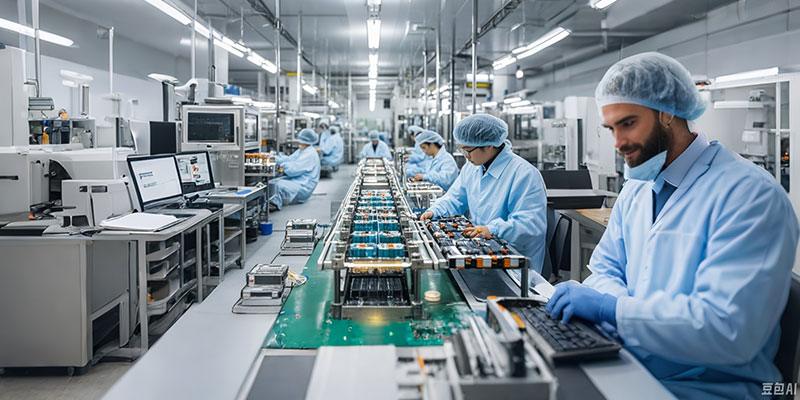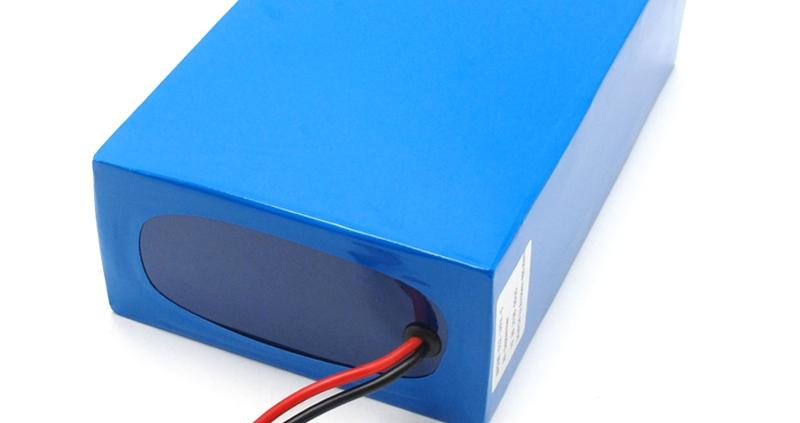Introduction
Selecting a reliable lithium-ion battery supplier is pivotal for any business that relies on energy storage solutions. The right supplier doesn’t just deliver a product but ensures that your energy needs are met with efficiency and reliability. This section emphasizes the importance of this decision and sets the stage for the detailed strategies that will follow, helping businesses make informed choices that align with their operational needs and long-term goals.

Understanding Lithium-Ion Batteries
- Composition and Mechanics: A lithium-ion battery consists of several key components: an anode (usually made from carbon), a cathode (composed of lithium metal oxide), and an electrolyte that facilitates the flow of lithium ions between the electrodes during charging and discharging. This basic understanding is crucial, as the quality and composition of these components significantly impact the battery’s performance, safety, and longevity.
- Applications Across Industries:These batteries are versatile and power a wide range of devices—from portable electronics like smartphones and laptops to critical applications in electric vehicles and large-scale energy storage systems. Their ability to provide high energy density and long cycle life makes them ideal for demanding applications, underscoring the need for high-quality suppliers who understand the nuances of battery requirements across different sectors.
Key Strategies for Choosing Suppliers
- Quality Certifications and Standards:The presence of quality certifications such as ISO (International Organization for Standardization) or UL (Underwriters Laboratories) is a non-negotiable indicator of a supplier’s commitment to quality. These certifications ensure that the supplier adheres to international standards for safety, quality management, and environmental compliance. It is crucial to verify these certifications to reduce the risk of product failures and ensure compliance with regulatory requirements.
- Production Capacity and Technological Capability:A supplier’s production capacity must align with your demand to ensure timely delivery. Additionally, their commitment to technological advancement is crucial. Suppliers who invest in the latest battery technologies offer more efficient, durable, and safer products. Assessing their R&D capabilities and how they integrate new scientific findings into their production process can provide a competitive edge in terms of product offerings.
- Supply Chain Management:Effective supply chain management is critical, especially in industries like electronics, where market demand can fluctuate significantly. A robust supply chain ensures that suppliers can manage raw materials, handle production scaling, and meet delivery deadlines without compromising on quality. This involves not only logistical expertise but also the ability to foresee and mitigate risks associated with global supply chain disruptions.
Evaluating Supplier Performance
- Customer Reviews and Case Studies:Evaluating what others have experienced with the supplier can give deep insights into their operational efficacy and customer service quality. Look for detailed reviews that discuss both strengths and weaknesses. Case studies are particularly useful as they provide a narrative on how the supplier has handled specific challenges or fulfilled unique customer needs, offering a clearer picture of what to expect in real-world scenarios.
- Sample Testing and Factory Inspections:Testing samples is a direct method to verify product specifications and performance against advertised standards. Additionally, factory inspections are crucial as they reveal a lot about the supplier’s operational practices, quality control measures, and overall workplace ethos. This hands-on approach helps ensure that the supplier’s day-to-day operations align with their stated capabilities and standards.
Evaluating Supplier Performance
- Customer Reviews and Case Studies:When assessing potential suppliers, thorough examination of customer reviews and case studies is invaluable. Customer reviews can offer a wealth of information about the supplier’s reliability, quality of the lithium-ion batteries, and customer service responsiveness. It’s important to look beyond just the ratings and read through the comments for specifics about what customers liked and disliked, how the supplier handled issues, and whether they would recommend the supplier to others. This real-world feedback is often more telling than promotional materials provided by the suppliers themselves.
- Additionally, detailed case studies provided by the supplier can serve as a critical resource in understanding how they approach different challenges. These should cover a variety of scenarios, including large-scale deployments and customized projects. Look for case studies that detail the problem, the solution implemented by the supplier, and the outcomes. Analyzing these situations will help you gauge the supplier’s expertise in delivering tailored solutions and their ability to handle complex orders under pressure.
- Sample Testing and Factory Inspections:Before finalizing any agreements with a lithium-ion battery supplier, conducting your own sample testing is crucial. Request samples of the products to conduct performance tests under conditions that mimic real-world use. This will help verify the consistency and reliability of the batteries, assess their safety features, and determine if they meet the technical specifications required for your applications.
- Factory inspections are another critical element of the evaluation process. Visiting the supplier’s manufacturing facilities allows you to firsthand observe their manufacturing processes, quality control measures, and worker conditions. During the inspection, pay attention to the cleanliness and organization of the facility, the sophistication of the machinery used, and the quality assurance processes in place. These factors can significantly affect the final product quality. Additionally, discuss their protocols for handling raw materials, production anomalies, and finished goods with the management team. This visit can also provide insights into the supplier’s scalability and flexibility in production, which are important for responding to fluctuating market demands.
Conducting Sample Tests
When conducting sample testing of lithium-ion batteries, it’s crucial to have a structured approach to accurately assess their performance and safety:
- Test Design:Design tests that simulate real-world conditions under which the batteries will be used. This includes temperature variations, load conditions, and charge/discharge cycles. Ensure that the test parameters align with your product’s operational requirements.
- Performance Metrics:Focus on critical performance metrics such as capacity, energy density, cycle life, and charge rate. For example, measure how long the battery maintains its claimed capacity over repeated charge cycles, or how quickly it can be charged without degrading its overall lifespan.
- Safety Testing:Safety is paramount with lithium-ion batteries due to their chemical nature. Conduct tests for thermal stability (how the battery withstands temperature extremes), short circuit conditions, and mechanical integrity (resistance to physical shock or puncture).
- Data Collection and Analysis:Collect data systematically during tests to ensure consistency. Use this data to analyze whether the batteries meet the specifications provided by the supplier. Discrepancies in performance metrics can indicate issues with the supplier’s quality control or production processes.
Interpreting Findings from Customer Reviews and Factory Visits
- Customer Reviews:When evaluating customer reviews, look for patterns that may indicate systemic issues with the supplier’s products or services. For example, repeated mentions of premature battery failure or poor customer service response can be red flags. Also, consider the context of any complaints; isolated issues may not necessarily indicate overall poor quality but could suggest areas for further inquiry.
- Factory Visits:During a factory visit, the following observations can provide deeper insights:
- Production Line Efficiency:Observe the flow of materials and the efficiency of the production line. Delays or bottlenecks in the production process can signal potential problems in fulfilling large orders or maintaining consistent quality.
- Quality Control Processes:Note the presence and frequency of quality checks during the manufacturing process. Frequent and rigorous testing at various production stages is a good indicator of a commitment to quality.
- Employee Training and Engagement:Engage with floor staff and management to gauge their expertise and morale. Well-trained and motivated employees are typically reflective of a high-quality operation.
- Environmental Compliance:Check for adherence to environmental regulations and safety standards. Proper handling and disposal of battery manufacturing materials are critical for environmental compliance and sustainability.
Best Practices for Maintaining Supplier Relationships
Maintaining a strong relationship with your lithium-ion battery suppliers is crucial for ensuring a stable supply chain and receiving continuous quality and innovation. Here are some best practices to foster and maintain these relationships:
- Clear Communication:Establish open and frequent communication channels to ensure both parties are aligned on expectations and requirements. Regular meetings, whether virtual or in-person, can help address any concerns and provide updates on ongoing issues or developments.
- Collaborative Problem Solving:When issues arise, approach them as a partnership rather than assigning blame. Collaborative problem-solving helps in finding solutions that are beneficial for both parties and can prevent similar issues in the future.
- Contract Transparency:Ensure that all agreements are clear and transparent, with mutually agreed-upon terms. This includes detailed specifications, delivery schedules, payment terms, and any penalties for non-compliance. Clear contracts prevent misunderstandings and build trust.
- Long-Term Incentives:Consider long-term contracts that offer incentives for meeting or exceeding performance benchmarks. These can include pricing discounts, improved terms, or first access to new products. Incentives not only encourage suppliers to maintain high standards but also secure your supply chain for the future.
- Regular Performance Reviews:Conduct regular reviews of supplier performance against the agreed metrics. This not only helps in ensuring compliance with the terms but also in identifying areas for improvement. Provide feedback based on these reviews to help suppliers understand your needs better.
- Development and Training Opportunities:Offer opportunities for supplier development and training, especially if you have specific needs or standards. Investing in your supplier’s growth ensures they continue to meet your evolving requirements and can lead to innovations beneficial to both parties.
- Recognition and Rewards:Recognize and reward suppliers for exceptional work or significant improvements in their service or product quality. Recognition can reinforce positive behavior and motivate suppliers to continue performing at high levels.
Recommendations for Global Lithium-Ion Battery Suppliers
Selecting the right suppliers involves understanding their regional strengths and how these align with your business needs:
- Suppliers in the USA:Look for suppliers who are leaders in innovative battery technologies and have robust R&D capabilities. They should also comply with strict US regulations regarding product safety and environmental impact.
- European Suppliers:Focus on suppliers who excel in sustainability and eco-friendly practices, as European markets place high importance on environmental compliance. These suppliers are often pioneers in advanced battery recycling technologies as well.
- Asian Suppliers:In Asia, particularly in China, South Korea, and Japan, suppliers often offer cost-effective solutions without compromising on quality. These regions are known for their rapid scalability and extensive manufacturing capabilities, making them ideal for high-volume orders.
Strategic Partnership Management with Suppliers
To maximize the benefits of your relationships with lithium-ion battery suppliers, strategic partnership management is essential. Here are key strategies to effectively manage these partnerships:
- Integration of Supply Chains:Deeply integrate your suppliers into your supply chain operations. This can include sharing forecasts, production schedules, and market trends to help them better prepare and align their operations with your needs. Such integration helps in reducing lead times and improving response rates to market changes.
- Joint Innovation Initiatives:Engage in joint development projects where both parties contribute resources towards innovation in battery technology. This collaborative approach not only fosters a deeper partnership but also leverages the strengths of both sides to create more competitive and advanced products.
- Risk Sharing Mechanisms:Implement risk-sharing models where both parties share the risks involved in new projects, such as new product development or entering new markets. This approach can encourage more investment and commitment from the supplier, knowing that the risks are mitigated and shared.
- Regular Strategic Reviews:Hold regular strategic review meetings to discuss the health of the partnership, alignment with strategic objectives, and future plans. These reviews should be candid and constructive, allowing both parties to realign strategies as necessary based on the evolving business environment and market conditions.
- Technology and Knowledge Transfer:Facilitate technology and knowledge transfer between your organization and the suppliers. This can include training sessions, workshops, and regular exchange of best practices. Such activities not only enhance the supplier’s capabilities but also ensure that they are up to date with the latest technological and market developments relevant to your needs.
- Sustainability and Compliance Alignment:Work closely with suppliers to ensure that they meet your company’s standards for sustainability and compliance. This includes regular audits, compliance checks, and support in implementing sustainable practices in their operations. Aligning these standards helps maintain a responsible supply chain that reflects your brand well and meets regulatory requirements.
Future Trends in Lithium-Ion Battery Supply
Looking forward, the lithium-ion battery market is poised to evolve with advancements in technology, changes in regulatory landscapes, and shifts in consumer demands. Here’s what to expect:
- Advancements in Battery Technology:Ongoing research is likely to yield improvements in battery life, charging speed, energy density, and safety. Keeping abreast of these advancements and working with suppliers who are committed to innovation will be crucial.
- Increased Regulation:As the global emphasis on environmental impact grows, expect more stringent regulations surrounding battery production, especially concerning the sourcing of materials and end-of-life disposal. Ensuring that suppliers comply with these new regulations will be increasingly important.
- Rising Demand for Sustainability:There will be a greater push for batteries that are not only high-performing but also produced in an environmentally sustainable manner. Suppliers who prioritize green practices in their production processes will become increasingly valuable.
Preparing for Future Changes in the Lithium-Ion Battery Market
As the lithium-ion battery industry evolves, being proactive and forward-thinking in your supplier relationships and strategy will be key to maintaining a competitive edge. Here’s how you can prepare for upcoming changes:
Embracing Technological Innovations
- Stay Informed:Regularly update yourself and your team on the latest technological advancements in lithium-ion batteries. This can involve subscribing to industry journals, attending relevant conferences, and participating in webinars.
- Partner with Innovators:Prioritize relationships with suppliers who invest in research and development. Suppliers who are at the forefront of innovation can provide you with advanced products that may offer a competitive advantage in terms of performance and cost efficiency.
- Adopt New Technologies Early:Be open to integrating new technologies into your product lines. Early adoption can be risky, but with careful evaluation and the right partnerships, it can lead to significant market advantages.
Navigating Increasing Regulations
- Regulatory Compliance:Work closely with legal and compliance teams to monitor changes in regulations related to lithium-ion batteries. Ensure that your suppliers are also aware and capable of complying with these changes to avoid disruptions in your supply chain.
- Supplier Audits:Conduct regular audits of your suppliers to ensure ongoing compliance with both existing and new regulations. This can help identify potential compliance issues early and provide time to address them without significant impact.
- Advocate for Reasonable Regulations:Engage with industry associations to advocate for regulations that balance environmental and safety concerns with industry growth and innovation. Being part of these discussions can provide insights and influence that benefit your business strategy.
Increasing Demand for Sustainability
- Sustainable Sourcing:Encourage and collaborate with suppliers to adopt sustainable practices in sourcing materials. This includes using recycled materials, reducing waste, and improving energy efficiency in production processes.
- Lifecycle Management:Develop strategies for end-of-life management of batteries, such as recycling programs or partnerships with recycling companies. This not only helps in reducing environmental impact but also can provide a secondary stream of raw materials.
- Transparency and Reporting:Increase transparency in your supply chain by reporting on sustainability efforts and achievements. This can enhance your brand’s reputation and appeal to increasingly environmentally conscious consumers.

Conclusion
The lithium-ion battery market is rapidly evolving, driven by technological advances, regulatory changes, and shifting consumer preferences toward sustainability. By staying informed, choosing the right partners, and adapting to these changes proactively, you can ensure that your supply chain remains robust and competitive. Embrace these challenges as opportunities to innovate and lead in the marketplace.





